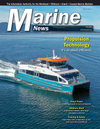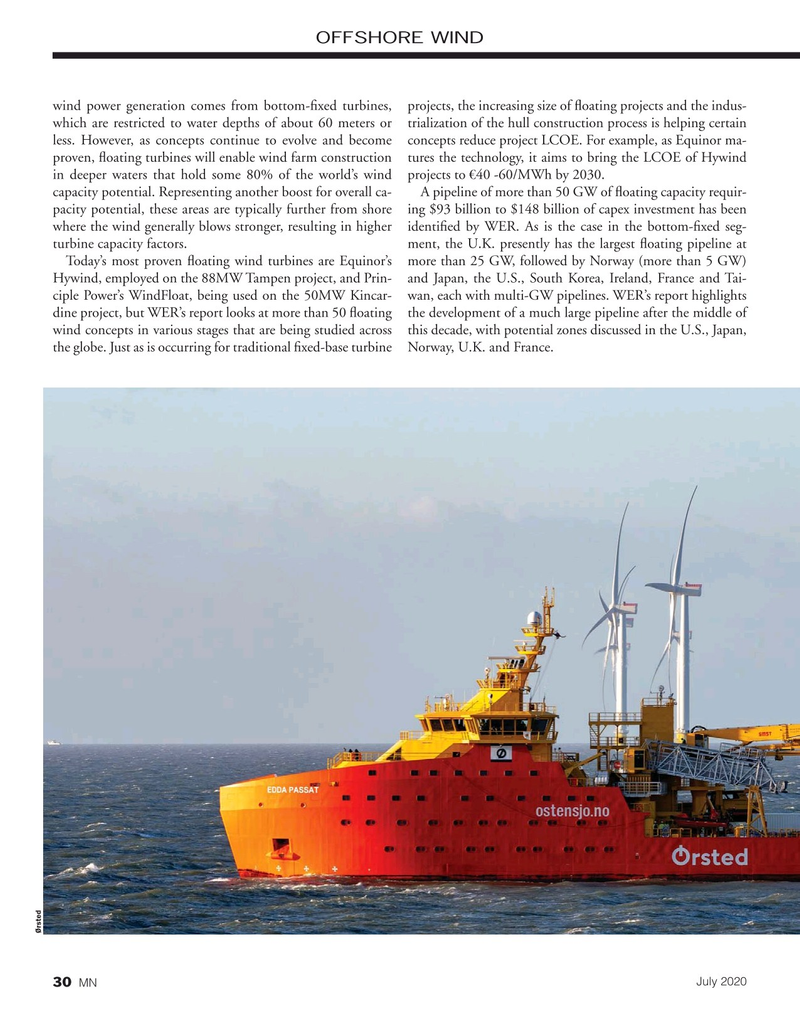
Page 30: of Marine News Magazine (July 2020)
Propulsion Technology
Read this page in Pdf, Flash or Html5 edition of July 2020 Marine News Magazine
OFFSHORE WIND wind power generation comes from bottom-?xed turbines, projects, the increasing size of ?oating projects and the indus- which are restricted to water depths of about 60 meters or trialization of the hull construction process is helping certain less. However, as concepts continue to evolve and become concepts reduce project LCOE. For example, as Equinor ma- proven, ?oating turbines will enable wind farm construction tures the technology, it aims to bring the LCOE of Hywind in deeper waters that hold some 80% of the world’s wind projects to €40 -60/MWh by 2030.
capacity potential. Representing another boost for overall ca- A pipeline of more than 50 GW of ?oating capacity requir- pacity potential, these areas are typically further from shore ing $93 billion to $148 billion of capex investment has been where the wind generally blows stronger, resulting in higher identi?ed by WER. As is the case in the bottom-?xed seg- turbine capacity factors. ment, the U.K. presently has the largest ?oating pipeline at
Today’s most proven ?oating wind turbines are Equinor’s more than 25 GW, followed by Norway (more than 5 GW)
Hywind, employed on the 88MW Tampen project, and Prin- and Japan, the U.S., South Korea, Ireland, France and Tai- ciple Power’s WindFloat, being used on the 50MW Kincar- wan, each with multi-GW pipelines. WER’s report highlights dine project, but WER’s report looks at more than 50 ?oating the development of a much large pipeline after the middle of wind concepts in various stages that are being studied across this decade, with potential zones discussed in the U.S., Japan, the globe. Just as is occurring for traditional ?xed-base turbine Norway, U.K. and France.
Ørsted
July 2020 30 MN

 29
29

 31
31
